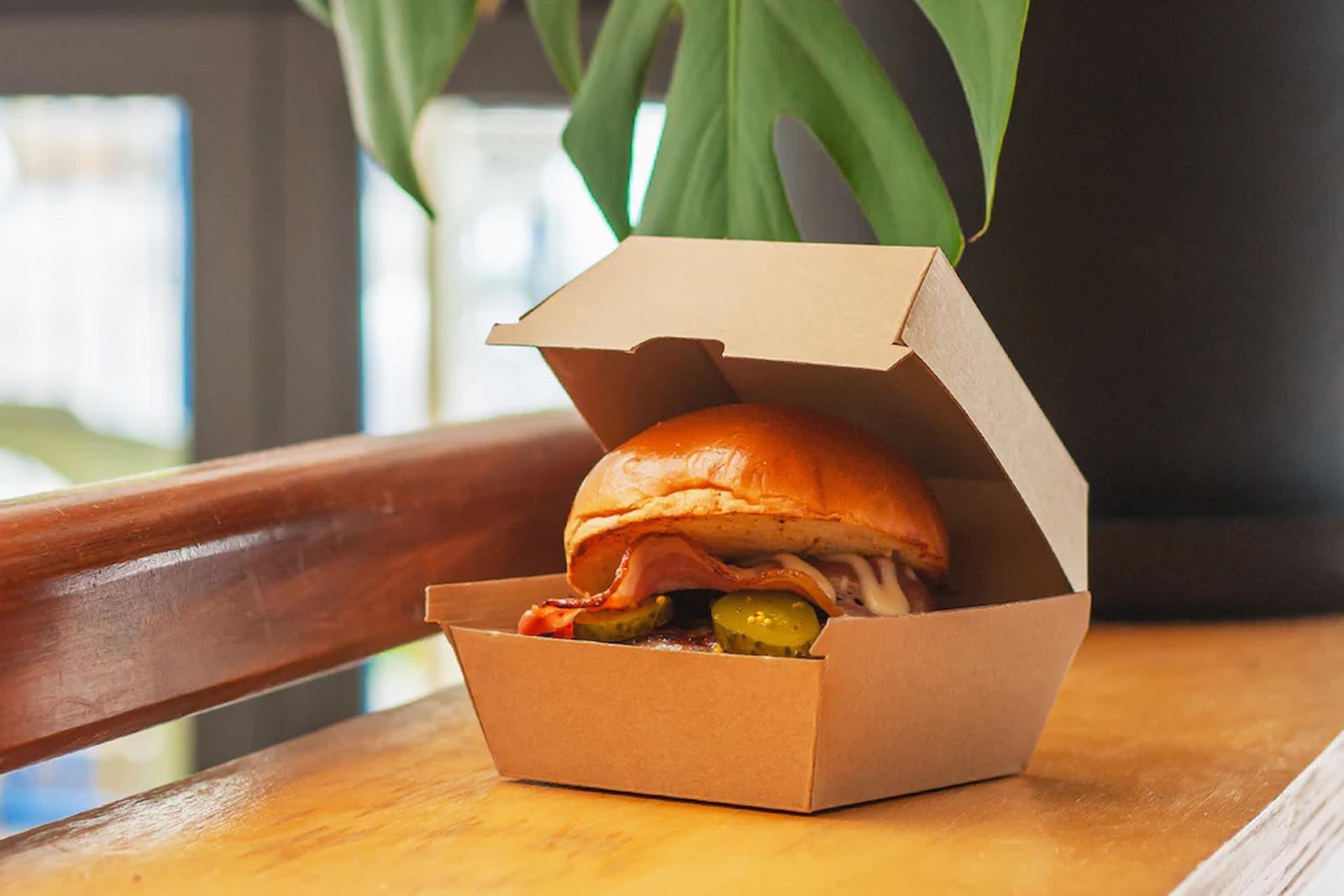The Environmental Benefits of Compostable Food Packaging

In a world increasingly conscious of the environmental impact of our daily choices, the quest for sustainable alternatives has led to innovations in various industries, including packaging. One such innovation that has gained significant attention is compostable food packaging. In this blog post, we’ll explore the environmental benefits of compostable food packaging, diving into why it matters, how it works, and the positive impact it can have on our planet.
Importance of Compostable Food Packaging
Food packaging keeps our food secure and fresh in modern times. Plastic and styrofoam packing cause pollution, resource depletion, and greenhouse gas emissions; it is also highly unhealthy for our bodies. In pursuit of more sustainable solutions, biodegradable food packaging appears promising, like that offered by Ambican burger boxes.
The Rise of Compostable Food Packaging
Innovative Materials:
Compostable food packaging is made from materials designed to break down naturally and return to the earth without leaving harmful residues. These materials include plant-based plastics, paper, and even edible films made from potato starch or seaweed.
Reduced Environmental Footprint:
The production of traditional plastic packaging is resource-intensive and contributes to the depletion of fossil fuels. However, biodegradable packaging materials are typically made from renewable resources, lowering carbon emissions.
Biodegradability:
Biodegradability is a major benefit of sustainable food packaging. These materials decompose into organic matter through composting, adding nutrients to the soil. This contrasts with traditional polymers, which can last centuries.
How Compostable Food Packaging Works
Composting Process:
Composting is a natural biological process where microorganisms break down organic matter into nutrient-rich compost. Compostable food packaging materials are designed to facilitate this process.
Suitable for Industrial Composting:
Compostable packaging is typically designed to be processed in industrial composting facilities, where conditions are carefully controlled to optimise decomposition. These facilities provide the ideal environment for compostable materials to break down efficiently.
Home Composting Options:
Industrial composting facilities are best for biodegradable packaging; however, certain goods may be composted at home. Diverting garbage from landfills reduces environmental impact even more.
Environmental Benefits of Compostable Food Packaging
Reduced Landfill Waste:
Reduced landfill waste is one of biodegradable food packaging’s initial advantages. Plastic packaging may take millennia to disintegrate in landfills, worsening waste management. Compostable packaging like that of Ambican burger boxes degrades in months.
Lower Greenhouse Gas Emissions:
Decomposing organic waste in landfills releases methane, a strong greenhouse gas. We can minimise methane emissions and fight climate change by composting organic items, especially biodegradable packaging.
Improved Soil Health:
The compost produced from compostable packaging materials is rich in nutrients and enhances soil health.
As a soil conditioner, compost promotes water retention, nutrient availability, and structure. This benefits agriculture and landscaping by decreasing chemical fertilisers.
Reduction in Plastic Pollution:
Ocean and terrestrial plastic pollution is mostly caused by traditional plastic packaging. Compostable packaging solves this issue by breaking down into natural components without microplastics.
Challenges and Considerations
Infrastructure and Education:
While compostable food packaging holds great promise, its widespread adoption faces infrastructure and consumer education challenges. Industrial composting facilities are few in many places, making biodegradable waste disposal challenging. Consumers need to learn how to recognise and dispose of hazardous items.
Compatibility with Other Recycling Streams:
There can be confusion about disposing of compostable packaging in areas without dedicated composting facilities. When mistakenly placed in recycling or landfill bins, these materials can contaminate recycling streams or degrade compost quality in landfills.
Cost Considerations:
Compostable food packaging can be more expensive to produce than conventional alternatives. As demand and supply rise, pricing may become more competitive. Long-term environmental advantages may offset early expenses.
Conclusion
Food packaging like this is a big step towards sustainability. Lowering greenhouse gas emissions, removing rubbish from landfills, and increasing soil health alleviate numerous environmental challenges. It needs supported infrastructure, good education, and customer awareness to succeed.
Consumers drive compostable food packaging adoption. We can improve the environment by using biodegradable items, composting them in bins, and promoting sustainability.
This is simply one part of environmental protection. However, it shows how ingenuity may solve complicated challenges. Compostable food packaging shows our dedication to a greener, more sustainable future for future generations.





